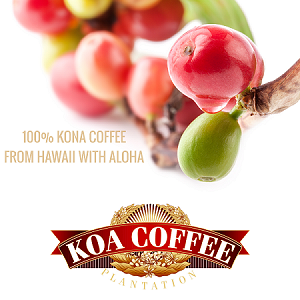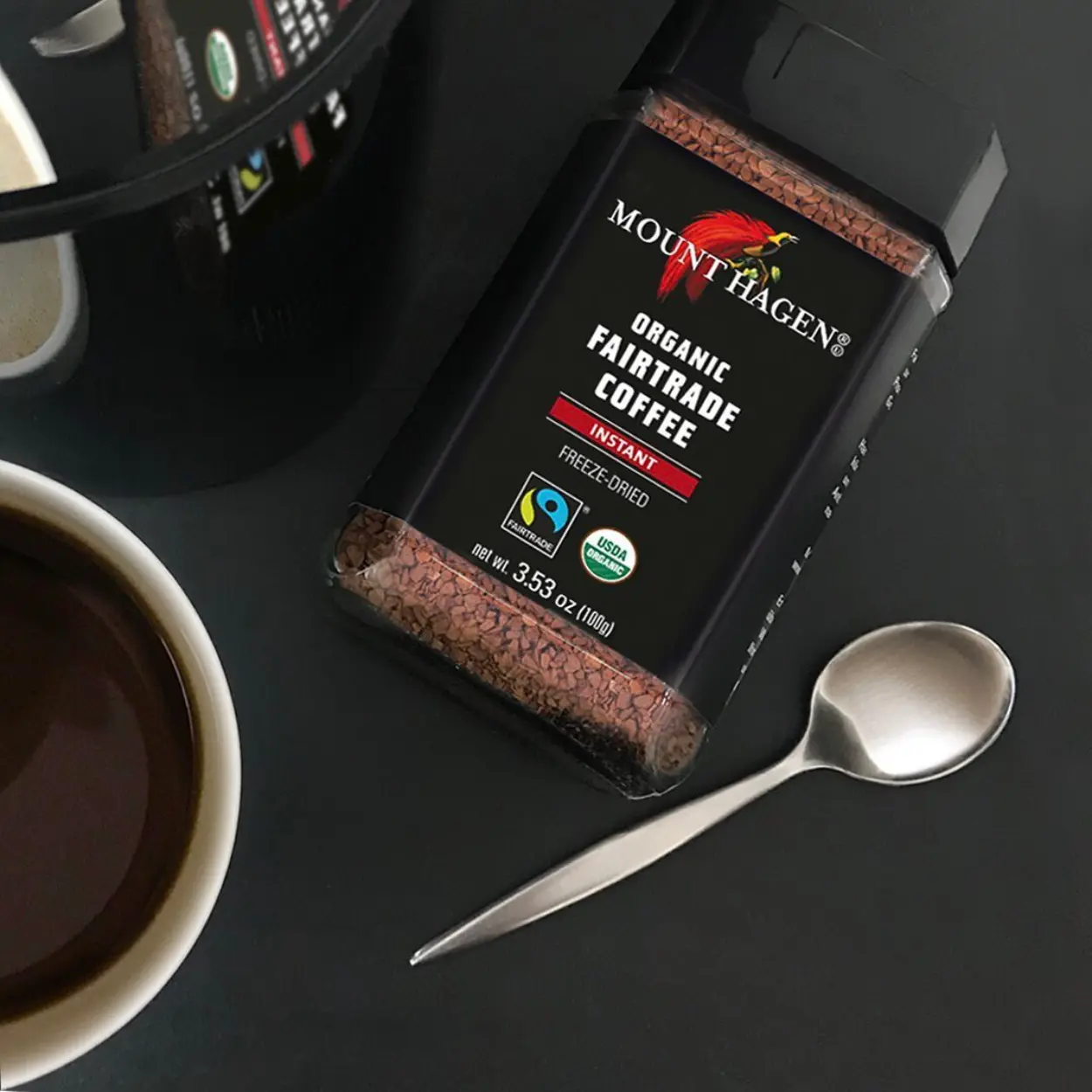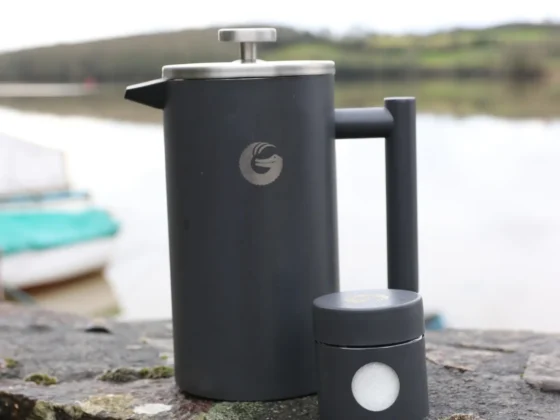In a world brimming with diverse coffee cultures, Puerto Rico stands as a beacon of exceptional quality and rich tradition. From the high-altitude plantations nestled in its lush, mountainous terrain to the passionate farmers dedicated to their craft, the island is synonymous with superior coffee production. But with the abundance of options available, how does one sift through to find the true gems? Enter our comprehensive guide to the best Puerto Rican coffee. Here, we will take you on an aromatic journey through the island’s most prestigious coffee offerings, highlighting the signature brews of authentic brands that have become synonymous with excellence.
Whether you are a seasoned connoisseur seeking your next favorite roast or a curious newcomer eager to explore, this guide will serve as your expert companion in uncovering the distinct, vibrant flavors that define the best Puerto Rican coffee brands. Prepare for an enlightening exploration that goes beyond the cup, into the heart and soul of Puerto Rico’s cherished coffee tradition.
Best Coffee From Puerto Rico: Key Takeaway
- From Volcanic Soil to Your Cup: This delectable coffee is grown in unique terroir, marked by volcanic soil and optimal climate, giving it a distinctive flavor that sets it apart on the world stage.
- Rooted in Tradition, Blossoming in Modernity: Delve into how Puerto Rico’s past, from colonial history to recent revival efforts, has sculpted its vibrant coffee industry today.
- Stars of the Show: Café Lareño, Café de Oro, and Café Di Laris: Meet the trailblazing brands that are keeping the island’s coffee culture alive, offering a brew that is as rich in history as it is in flavor.
- Master the Art of Puerto Rican Coffee: Unlock the secrets to brewing this beverage at home, from achieving the perfect coffee-to-water ratio to selecting the ideal brewing method.
- Buying with Confidence: Secure Your Authentic Puerto Rican Brew: Learn to navigate the market for genuine Puerto Rican coffee, emphasizing trusted brands, labels, and the best seasons for fresh purchases.
Top 5 Puerto Rican Coffee Brands Worth Trying
Nestled in the verdant, highland terrains of Puerto Rico, where the air is as pure as the crystal-clear waters, grow some of the world’s most coveted coffee beans. In this Caribbean haven, coffee is not just a morning routine; it’s a heartfelt tradition, an art passed down through generations. As vibrant in the aroma as they are rich in heritage—these are the signatures of the best Puerto Rican coffee. In this guide, we journey through the top five Puerto Rican coffee brands that have not only captured local hearts but have garnered global adoration. Prepare for a delectable voyage that awakens the senses and stirs the soul.
Café Yaucono: A Legacy of Quality

In the world of coffee, Café Yaucono is nothing short of a legend. For decades, it has stood as a beacon of comfort in Puerto Rican households, offering a cup that’s synonymous with home. Its medium-roasted blend marries premium coffee with an infusion that’s harmonious, velvety, and impeccably balanced—it’s like a comforting, old friend who never changes. The beans, chosen with discernment and toasted with mastery, are processed to an ultra-fine consistency that sets the stage for an unparalleled flavor experience. With every sip, you are reminded of why “Por el gustito yo lo se, Yaucono es el mejor cafe” (One sip is all it takes; Yaucono is the ultimate coffee choice).
- Roasting Level: Medium
- Presentation: Ground
- Certifications: None
- Commitment to Tradition: Upholding a trusted reputation as a favored selection for countless generations
- Craftsmanship: Exceptional handpicking and roasting techniques honed over decades
Alto Grande: Elevating Coffee Elegance
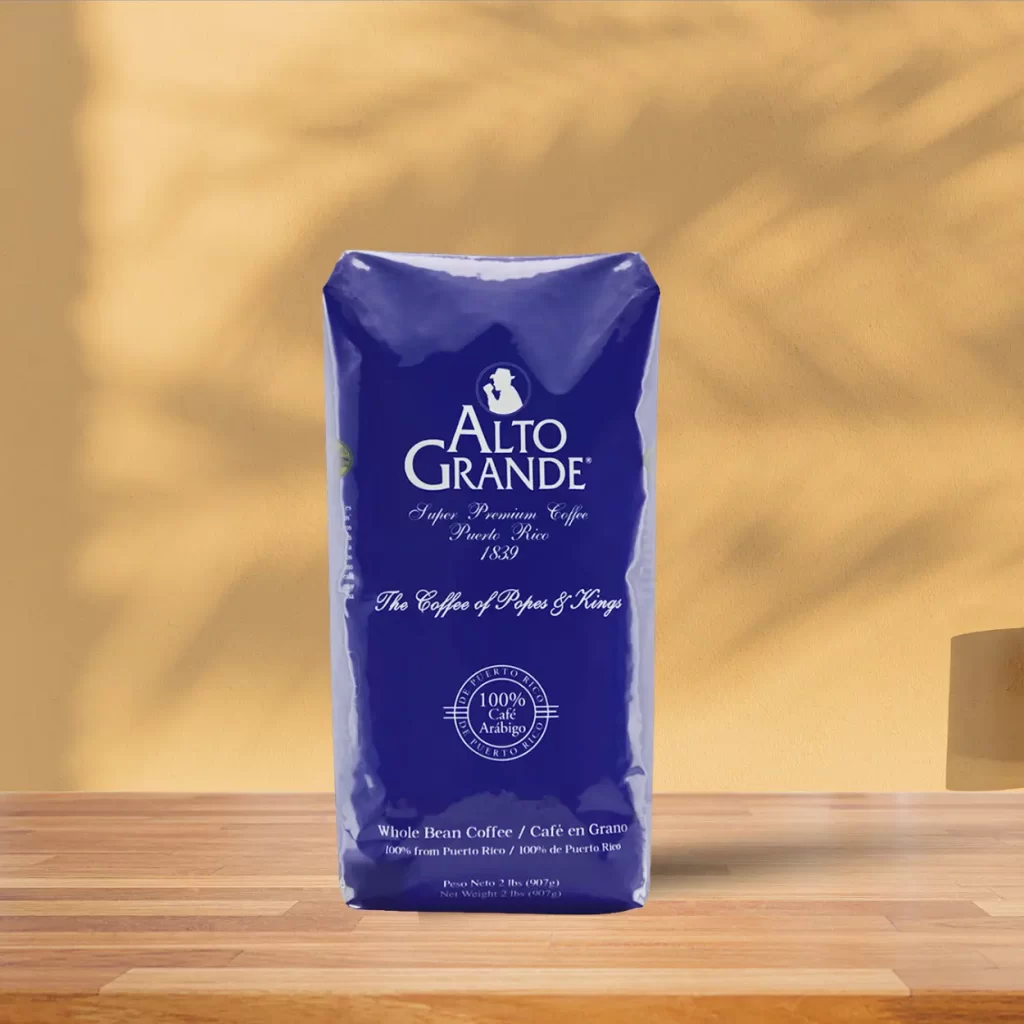
Alto Grande is not just coffee; it is an affair of grandeur and opulence, a coffee experience that is, quite literally, fit for kings and pontiffs. Picture this: a bean so unique and meticulously nurtured that it earns the nod from European royalty and the Vatican in Rome alike. From its inception in 1839, within the territories of Buenos Aires and Santa Isabel in Lares, Puerto Rico, this brand has stood as the gold standard of coffee elegance. Its Arabica Super Premium beans, cultivated under optimal soil and climate conditions, result in a rich, full-bodied character, with an undercurrent of chocolate notes that dance beneath a fragrantly sweet aroma. Alto Grande is more than a coffee; it’s an eloquent statement of taste and refinement.
- Quality Tier: Super Premium
- Variety: 100% Arabica Super Premium
- Roast Level: Medium-Dark
- Sourcing: Directly procured from Puerto Rico, ensuring authenticity and quality
- Historic Prestige: Revered for nearly two centuries as a staple of luxury and excellence
Cafe Lareño: Where Tradition Meets Innovation

In the aromatic heart of Puerto Rico lies Cafe Lareño, a name synonymous with family and time-honored craftsmanship. For three decades, this family enterprise has been steadfast, not merely as a brand, but as an unwavering commitment to excellence. With each brew, Cafe Lareño isn’t just offering coffee—it is delivering a piece of Puerto Rican soul. It is for the Puerto Ricans yearning for a taste of home and for the new enthusiasts who are welcomed into an extended, global family. Whether light or dark, each roast level is a tribute to the chocolate and caramel notes that tell the story of their cherished island, offering a labor of love and an ode to Puerto Rico.
- Roast Level: Light and Dark
- Format: Ground
- Certifications: Organic
- Global Reach: A desire to unite Puerto Ricans abroad with a taste of home and introduce new enthusiasts to this special brew
Café de Oro: The Golden Standard of Flavor
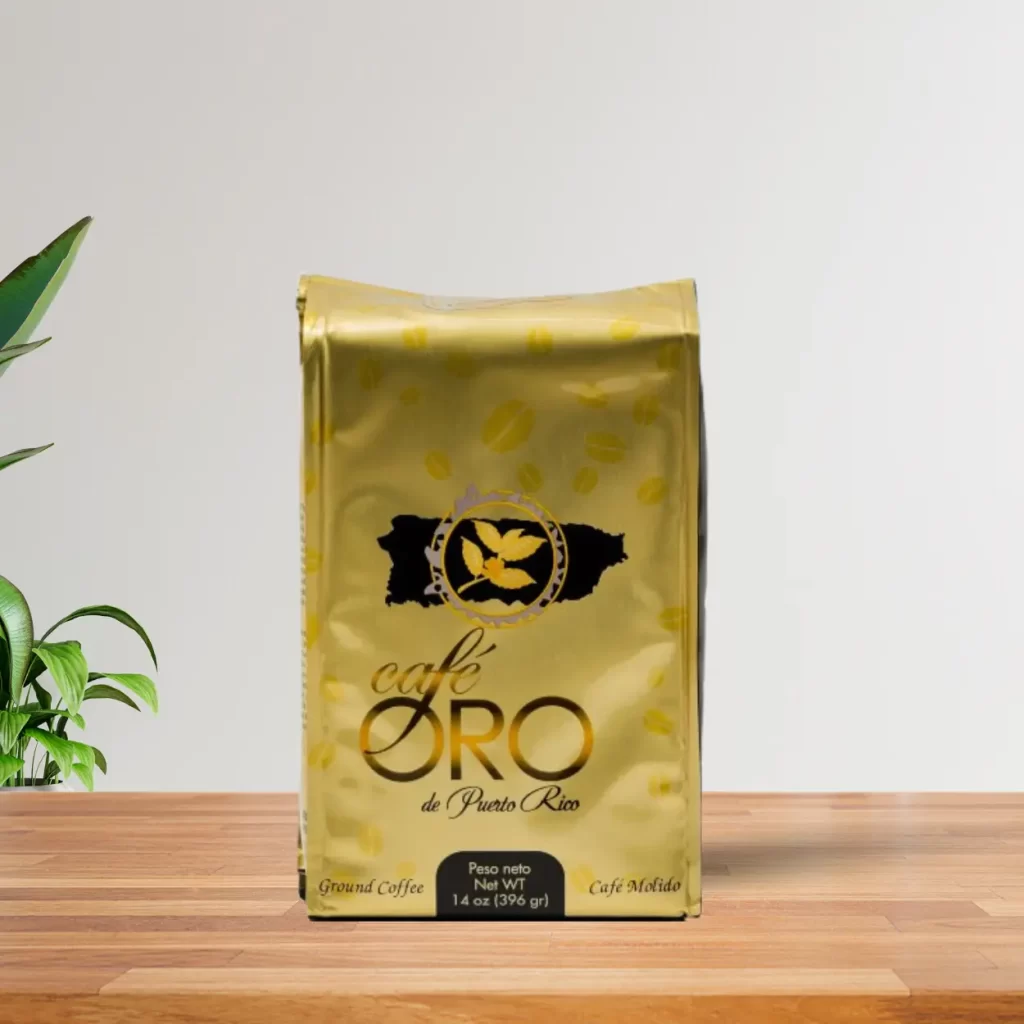
In every cup of Café de Oro lies a golden experience, reminiscent of the rolling, high-altitude landscapes of Lares from where it hails. Dark and intense, it’s a coffee that demands your attention from the first sip—rich with notes of chocolate that flirt with subtle hints of caramel. It’s more than a cup of coffee; it’s an embrace of Puerto Rican culture, a love letter composed with 100% Arabica beans and sealed with the signature darkness of its roast. Café de Oro isn’t just a name; it’s a promise—an assurance of a golden morning, every time.
- Roast Degree: Dark
- Presentation: Ground
- Certifications: Absent
- Bean Source: Exclusively featuring 100% Arabica beans, cultivated in the high terrains of Lares, Puerto Rico
Café Di Laris – The Essence of Puerto Rican Craftsmanship
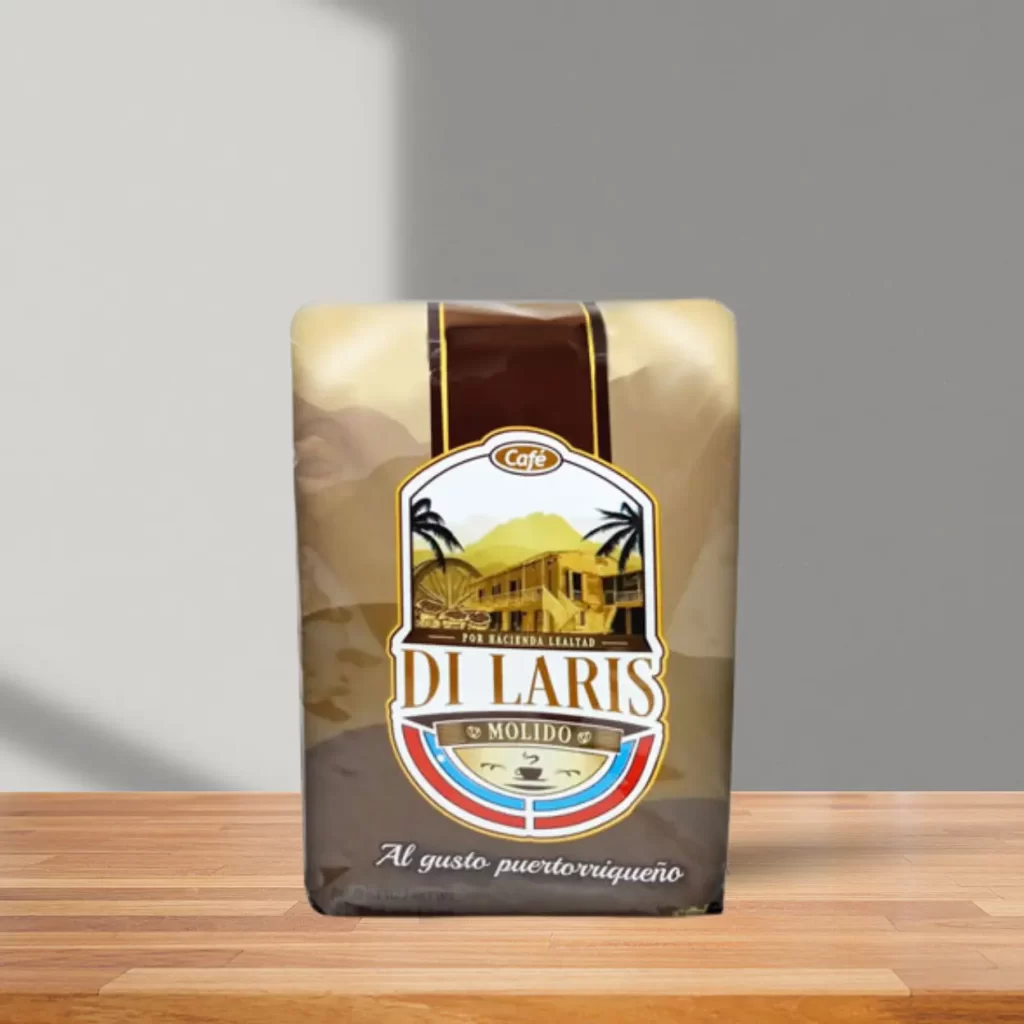
Originating from the esteemed Hacienda Lealtad in Lares, every bag of Café Di Laris is a testament to the integrity and purity of coffee roasting. From the first whiff, the velvety fragrance captivates, promising a robust and intense flavor that delivers in spades. The beans, carefully sun-dried and water-processed, sing a harmonious melody that’s noticeably sweeter and fruitier—a distinctive mark of the best coffee from Puerto Rico. With Café Di Laris, every cup is a return to authenticity, an experience untainted by additives and purely, soulfully Puerto Rican.
- Roast: Medium-Dark
- Bean Composition: 100% Arabica, a blend of Puerto Rican and meticulously sourced imported coffee
- Craftsmanship: Elaborated and roasted without additives, using a natural sun-drying technique
- Unique Processing: Water-only processing method following sun-drying, for a cleaner and sweeter finish
Aroma and Flavor Profiles that Captivate

In the world of coffee, aroma, and flavor are not just sensory experiences; they are a narrative, an evocative story spun in every brew. Puerto Rican coffee beans are exemplary storytellers, painting an elaborate palette of aromas and flavors that transport you straight to the vibrant hills and farms of Puerto Rico. Crafted by skilled Puerto Rico coffee roasters, these beans bear the legacy of the island’s rich soil and climate. Let’s uncover the unique, captivating profiles that define coffee in Puerto Rico.
Nutty Notes and Earthy Undertones

Venture into a Puerto Rican coffee plantation through the very first inhalation of its brew. Nutty notes are a comforting, familiar introduction—a warm welcome like the handshake of an old friend. These are intertwined seamlessly with the bold, grounding energy of earthy undertones, a tribute to the fertile Puerto Rican soil that nurtures each coffee plant. These notes provide the foundation for a coffee experience that is as rich and textured as the landscape from which it originates. It’s a rooted, authentic flavor that conjures images of coffee beans ripening under the Caribbean sun.
- Nutty Highlights: Almond, Hazelnut, Cashew
- Earthy Resonance: Soil, Wet Leaves, Wood
Hints of Chocolate and Fruity Infusions

As the coffee unfolds on your palate, the next chapter of this delightful story emerges. Luscious hints of chocolate, reminiscent of a comforting dessert shared with loved ones, embrace your senses. These chocolaty notes are like a soft, melodic tune that resonates warmly in your cup. But the story doesn’t end there. Dancing alongside the chocolate are vibrant infusions of fruit—bursts of citrus, berries, and tropical delights that mirror the rich biodiversity of Puerto Rico. It’s a surprising and delightful twist that keeps each sip as engaging as the last.
- Chocolaty Depths: Cocoa, Milk Chocolate, Dark Chocolate
- Fruity Brightness: Citrus Zest, Berries, Tropical Fruits
Balance and Complexity in Every Sip
The final act in this aromatic narrative is a masterful one, showcasing the true artistry of this lovely drink. As the nutty and earthy tones mingle with the rich chocolates and lively fruit accents, a remarkable equilibrium is achieved. But this balance is far from mundane—it’s intricate and thoughtful, a complexity that encourages you to pause and truly savor your coffee. Each sip is a harmonious blend, neither too bold nor too subtle, capturing the vibrant spirit and tradition of this coffee culture. It is, in essence, a standing ovation for your taste buds, and a fitting close to a cup that is nothing short of a masterpiece.
- Harmonious Blend: Perfectly calibrated flavors that create a full-bodied yet approachable coffee
- Artful Complexity: Layered notes that unveil themselves progressively, offering a fresh experience with every sip
- Masterful Roasting: The skill and expertise of Puerto Rico coffee roasters shine through in the impeccable balance of these beans
Brewing the Perfect Cup of Puerto Rican Coffee
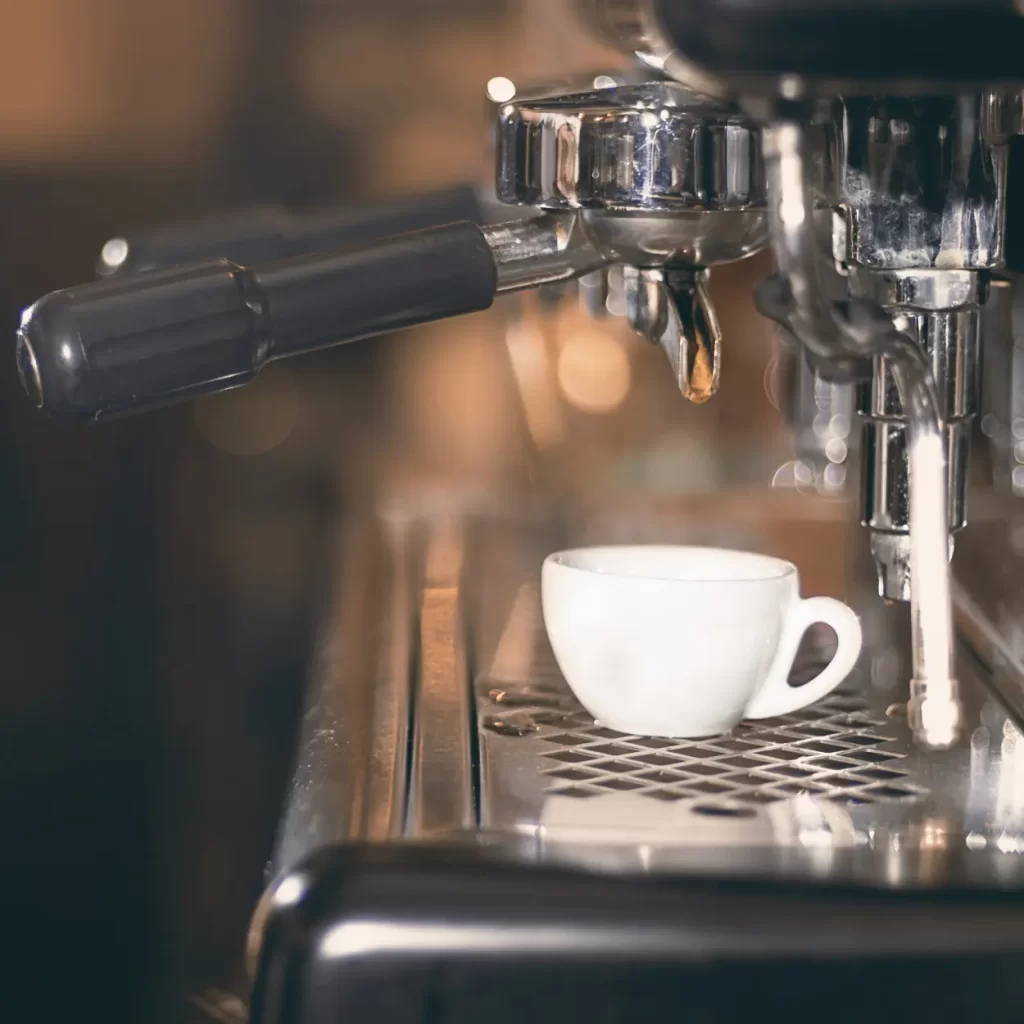
As with any coffee, brewing the best cup from Puerto Rico begins with an understanding of the basics and respect for the beans. This beverage is renowned for its rich, full-bodied flavor and enticing aroma, characteristics that deserve to be highlighted during the brewing process. To transform the best coffee from Puerto Rico into a perfect cup, it is essential to pay attention to a few key aspects: the coffee-to-water ratio, the brewing method, and, for those who love a creamy latte, the art of steaming milk. Let’s delve into these aspects to guide you toward the ultimate coffee experience.
Choosing the Right Coffee-to-Water Ratio
The coffee-to-water ratio is a critical aspect of brewing; it sets the stage for the strength and flavor of your coffee. For this drink, a general guideline is to start with a 1:16 ratio — one part coffee to 16 parts water. This can be adjusted to taste, but this ratio provides a balanced, flavorful brew that allows the unique characteristics of this beverage to shine through.
- Precision is Key: Weigh your coffee and water for accurate and consistent results. A kitchen scale can be your best friend in this scenario.
- Adjust to Taste: If you prefer a stronger cup, try a 1:15 ratio. For a lighter brew, a 1:17 ratio may be more to your liking.
Exploring Brewing Methods: Espresso vs. Drip
Coffee in Puerto Rico is traditionally enjoyed as a strong, rich brew, but the island’s beans are versatile and can be prepared using a variety of methods, depending on your preference.
- Espresso: This coffee drink makes a delightful espresso, offering a concentrated flavor and creamy body. Espresso is ideal for those who love a robust, intense cup.
- Drip Coffee: This method is perfect for those who enjoy savoring their coffee in larger quantities. A drip coffee maker or a pour-over setup can highlight the nuanced flavors of this drink, resulting in a clean and flavorful cup.
- Experiment and Explore: The best way to discover your preferred brewing method is to experiment. Each method will accentuate different aspects of Puerto Rico’s unique coffee profile.
Mastering the Art of Steaming Milk for Lattes
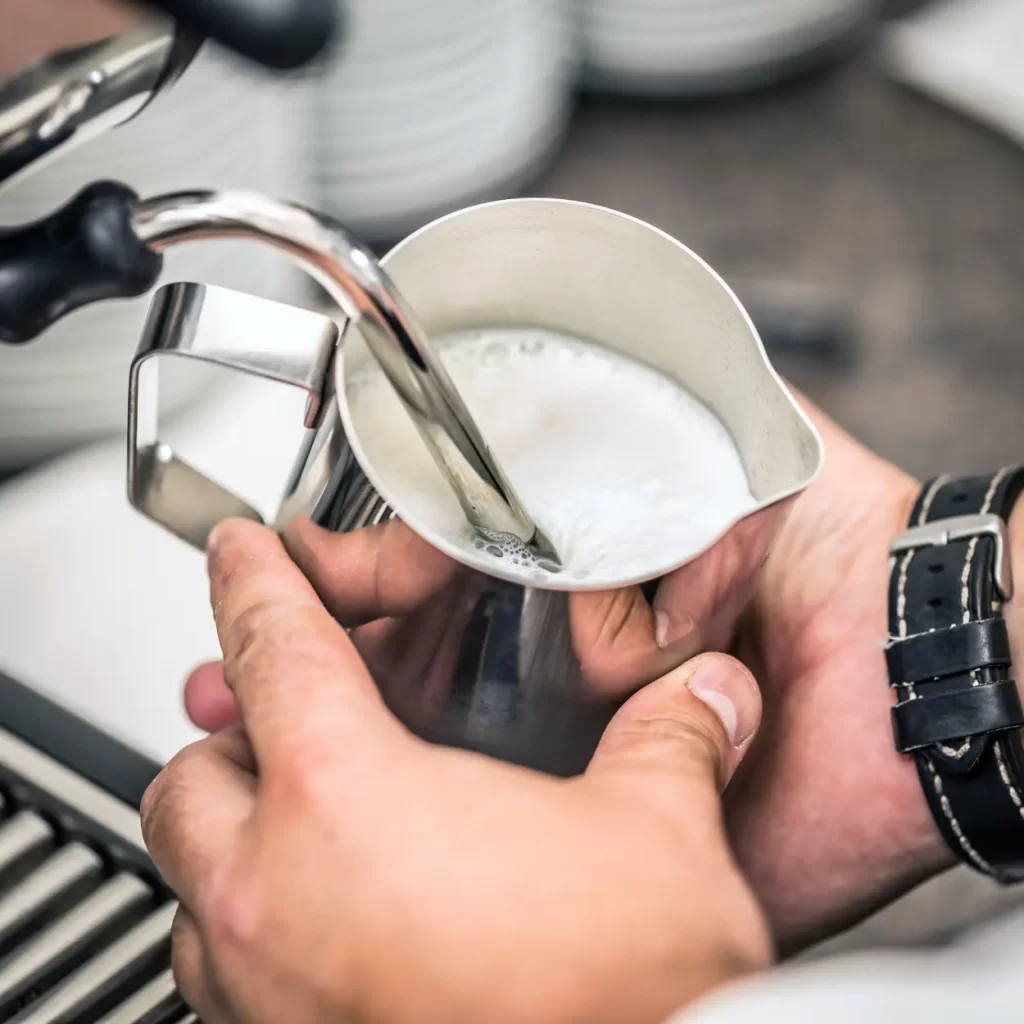
If lattes are your coffee of choice, pairing this coffee with perfectly steamed milk can create a sublime experience. The natural sweetness and full body of this beverage complement the creamy richness of steamed milk, producing a latte that is both comforting and invigorating.
- Quality Milk Matters: Choose fresh, high-quality milk. Full-fat milk tends to yield the creamiest results, but alternative milks (such as almond, soy, or oat) can also work beautifully.
- Achieving Microfoam: Aim for milk that is steamed to a silky, velvety texture, with small, uniform bubbles. This is called ‘microfoam,’ and it’s the gold standard for lattes.
- Temperature Control: Heat the milk to a temperature between 150 and 155 degrees Fahrenheit (65-68 degrees Celsius). Overheating the milk can cause it to lose sweetness and develop a burnt taste.
Tips for Achieving the Perfect Brew
Brewing the perfect cup of this beverage is akin to creating a small masterpiece: it’s an art that combines technique, quality ingredients, and a touch of personal flair. Here are some essential tips that can elevate your coffee brewing process, turning a routine activity into a daily indulgence that pays homage to the rich tradition of this coffee drink.
Freshness First
Always use freshly roasted and freshly ground coffee. This beverage is known for its vibrant, robust flavors, which are best experienced when the beans are at their freshest.
- Store your coffee in an airtight container in a cool, dark place to preserve its flavor and aroma.
Grind Size Matters
Match the grind size of your coffee to your brewing method. For example, espresso requires a fine grind, while drip or pour-over methods typically work best with a medium grind.
- Investing in a good quality burr grinder allows for consistent grind size, which is key for a balanced extraction.
Use Clean, Filtered Water
The water you use should be clean and free of impurities to ensure it doesn’t interfere with the coffee’s flavor.
- The ideal water temperature for brewing is between 195 and 205 degrees Fahrenheit (90-96 degrees Celsius).
Mind the Brewing Time
Different methods require different brewing times. Whether you’re making an espresso (which takes about 25-30 seconds per shot) or a French press (which requires a 4-minute steep), following the recommended time is crucial for avoiding over or under-extraction.
Experiment and Personalize
After you have the basics down, don’t be afraid to make the process your own. Experiment with different coffee-to-water ratios or try new brewing methods until you find what suits your taste best. Remember, the best coffee is the one you like the most!
Clean Your Equipment Regularly
Coffee leaves behind oils and residue that can build up over time and affect the taste of your brew. Regular cleaning ensures every cup is as delicious as possible.
The Rich History and Culture of Puerto Rican Coffee
This coffee is more than just a beverage; it is an integral part of the island’s rich history and vibrant culture. Its story is one of prosperity, decline, and inspiring resurgence. Here we delve into the fascinating journey of coffee in Puerto Rico, from its introduction to the island to its current revival.
Coffee’s Arrival and Cultural Integration

In 1736, coffee made its grand entrance into Puerto Rico from neighboring Martinique during the period of Spanish colonial rule. Initially introduced as a secondary cash crop, coffee quickly found its place in the hearts of Puerto Ricans, and its consumption was primarily local. By the close of the 18th century, Puerto Rico was already producing over a million pounds of coffee annually, signaling the start of a love affair that endures to this day. (1)
Takeaway:
- Introduced from Martinique in 1736 during Spanish colonial governance
- Initially a secondary cash crop, swiftly integrated into the Puerto Rican lifestyle
- By the end of the 18th century, annual production exceeded a million pounds
Legacy of Coffee in Puerto Rican Traditions
The late 19th century marked the golden era of coffee cultivation in Puerto Rico, positioning the island as the world’s seventh-largest coffee producer. Utuado, in particular, held prominence as a pivotal hub for coffee production. European immigrants, notably from Spain, played a significant role during this time, contributing their expertise to the cultivation and processing of Puerto Rican coffee beans. This period, though long past, left a profound legacy that continues to shape the island’s culture.
Takeaway:
- The world’s seventh-largest coffee producer in the late 19th century
- European immigrants played a key role in its cultivation and growth
- The legacy continues today with coffee deeply embedded in Puerto Rican traditions
Coffee Farms: Sustaining Heritage and Livelihoods

The coffee farms, or haciendas, are the beating heart of Puerto Rico’s coffee culture. (2) From the historical estates dating back to the Spanish colonial era to newer ventures, these farms aren’t just businesses; they are a testament to the island’s heritage. Today, novel coffee plantations have been established in the Cordillera Central, where the volcanic soil’s rich nutrient content fosters the high-value production of gourmet coffee. These farms represent both the past and the future of coffee in Puerto Rico, sustaining livelihoods and keeping traditions alive.
Takeaway:
- Historical haciendas are a living testament to Puerto Rico’s coffee heritage
- The Cordillera Central region, known for its rich volcanic soil, is a key coffee cultivation area
- Coffee farms sustain local livelihoods and connect modern growers with their heritage
Modern Coffee Industry Challenges and Revival
The annexation of Puerto Rico by the United States in 1898 marked a significant turning point. With the U.S. acquisition, the island’s agricultural focus shifted towards commercial sugarcane cultivation, and the once-thriving coffee industry faced a steep decline. However, the modern era has seen an inspiring revival. Numerous traditional estates have been rejuvenated, and the essence of this tasty coffee—marked by its mellowness and inherent sweetness—is capturing attention once more on the global stage.
Takeaway:
- U.S. annexation in 1898 led to a shift towards sugarcane, causing the coffee industry to decline
- Modern revival with the reopening of traditional estates and expansion of cultivation areas
- The current industry focuses on producing high-quality, gourmet Puerto Rican coffee beans
This history and the current revival efforts are bringing the exquisite coffee from Puerto Rico back into the limelight, making Puerto Rico coffee plantation tours an enriching experience for visitors and locals alike.
From Plantation to Processing: Crafting Excellence
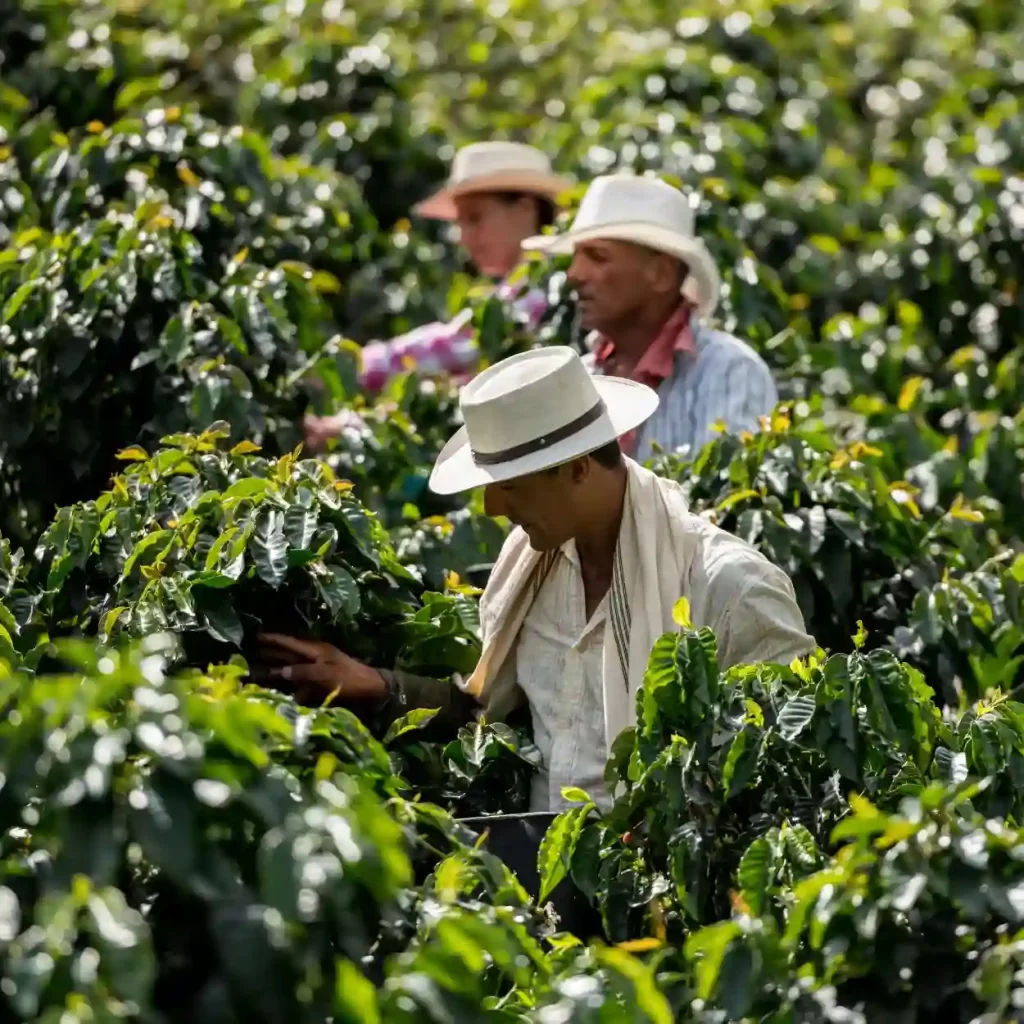
Puerto Rico stands as a symbol of quality and tradition. From the nurturing of coffee plants on verdant mountain slopes to the final touches in the roasting process, the journey of this coffee drink is a meticulous craft that results in an extraordinary cup.
Meticulous Cultivation of Coffee Beans
In the heart of Puerto Rico, coffee plantations stretch across regions from Rincón to Orocovis in the central-western area and are nestled within elevations of 2,400 to 2,780 feet. Here, the coffee from Puerto Rico is cultivated with a palpable passion, with the significant zones being Yauco, Adjuntas, San Sebastián, Lares, and Las Marías. These plantations house primarily Coffea arabica species, with Bourbon, Typica, Pacas, and Catimor being the notable varieties grown. Meticulous care is evident in every bean, but challenges persist: from changing climate conditions and cloud cover to political instability and high production costs. A notable challenge faced is a labor shortage, with nearly fifty percent of the crop remaining unharvested due to a lack of available pickers.
Takeaway:
- Coffee is cultivated in elevations ranging from 2,400 to 2,780 feet
- Primary coffee-producing zones: Yauco, Adjuntas, San Sebastián, Lares, Las Marías
- Main coffee species: Coffea arabica
- Notable varieties: Bourbon, Typica, Pacas, Catimor
Traditional and Modern Coffee Processing Methods

The post-harvest process is equally crucial in crafting this delectable beverage. Traditional methods of processing, handed down through generations, are cherished and maintained alongside modern techniques. This blend of old and new ensures the preservation of the rich, unique flavors that Puerto Rican coffee brands are celebrated for. Increasingly, there is potential for further growth in higher altitude regions, such as Ponce, with elevations up to 4,390 feet, where unique flavors can be developed.
Takeaway:
- Traditional methods are preserved, reflecting a rich history of coffee production
- Modern techniques are employed to maintain high standards of quality
- Increasing interest in cultivating coffee at higher altitudes, such as Ponce (up to 4,390 feet)
The Role of Roasting in Flavor Development
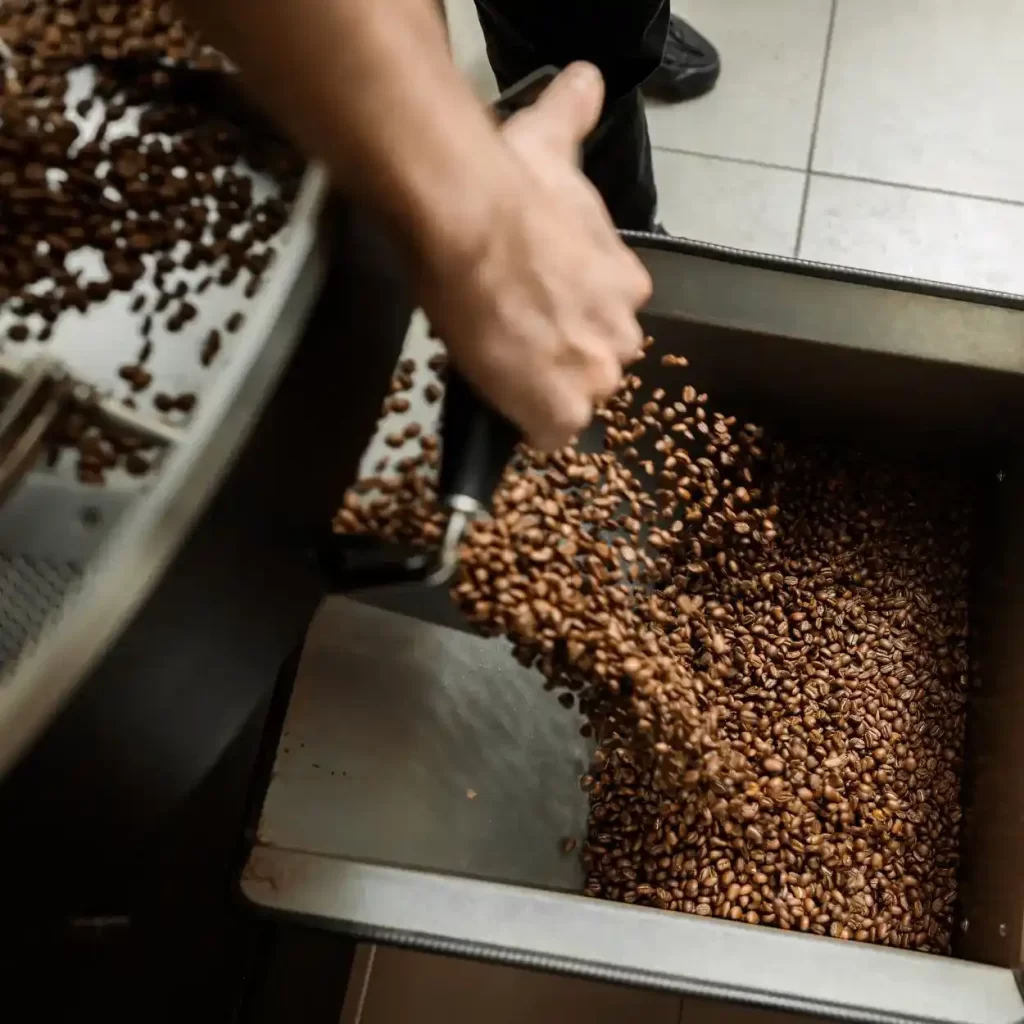
The art of roasting is where the carefully grown and processed coffee beans are transformed into the final product that graces our cups. Puerto Rico’s roasters are artisans in their own right, understanding the delicate balance needed to bring out the depth and complexity of flavors in each bean. From light to dark roasts, the spectrum of flavors available in this coffee is a testament to the expertise involved in this phase of production. It is in this stage that the coffee’s inherent sweetness and mellowness, the signature of this tasty coffee, is either highlighted or deepened, creating a variety that caters to every coffee lover’s palate.
Takeaway:
- Roasting is a critical stage in the development of flavor profiles
- Artisan roasters in Puerto Rico are skilled in producing a range of roasts
- Expertise in roasting ensures the preservation of this coffee’s signature sweetness and mellowness
In every step from the Puerto Rico coffee plantation to the processing facilities, the dedication to crafting excellent coffee is unmistakable. This commitment to quality, despite various challenges, makes this beverage an exceptional experience for those who savor it.
How to Buy Authentic Puerto Rican Coffee
In a market flooded with options, buying authentic Puerto Rican coffee can feel like finding a needle in a haystack. This beverage is celebrated for its rich flavor, distinctive sweetness, and robust aroma, making it a sought-after choice for coffee enthusiasts worldwide. When it comes to ensuring that the coffee you are buying is genuine, there are specific aspects to look out for, including labels, seals, and timing your purchase to coincide with the peak coffee season on the island.
Recognizing Authentic Labels and Seals
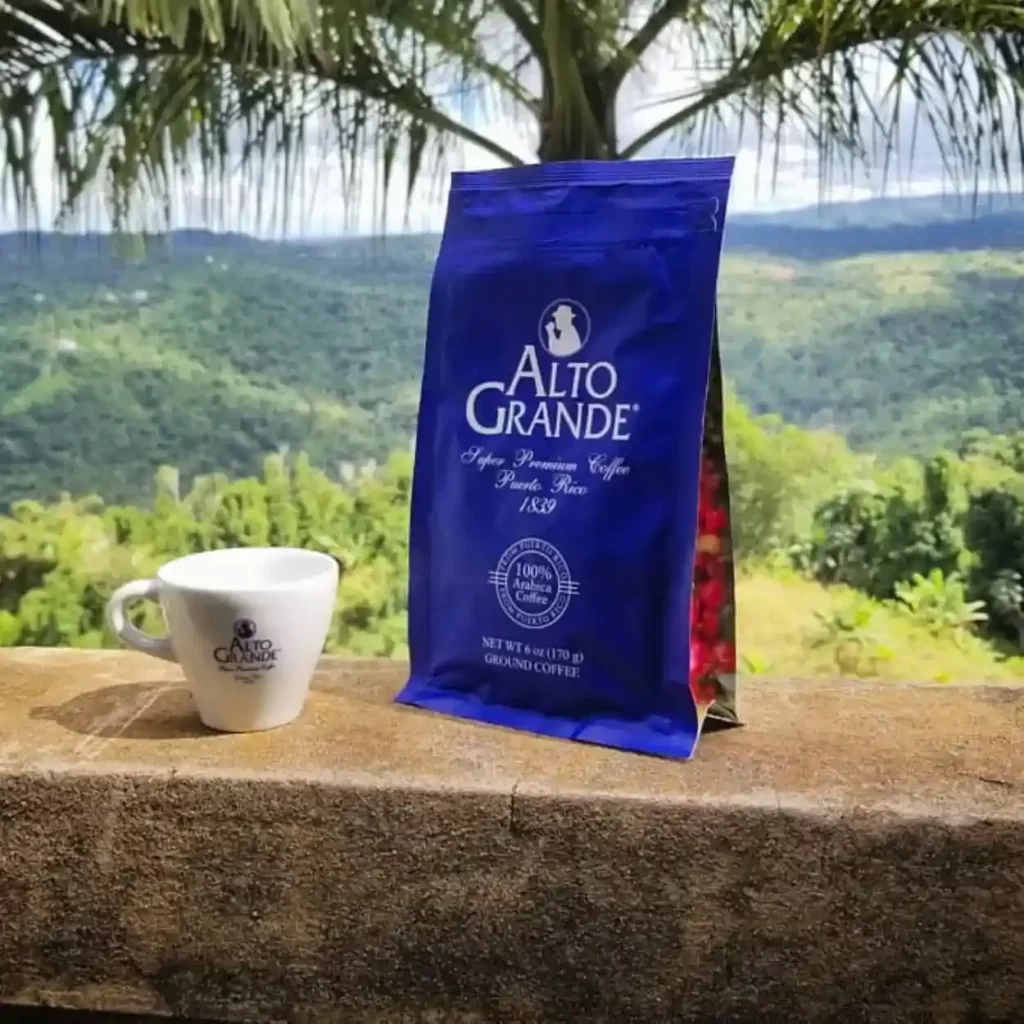
First and foremost, familiarize yourself with the labels and seals that signify the coffee’s authenticity. Genuine Puerto Rican coffee is often distinguished by a “100% Café de Puerto Rico” seal, which is an official certification that the coffee was grown, processed, and packaged in Puerto Rico. Moreover, it’s crucial to pay attention to details on the packaging; authentic products will typically display the name and location of the coffee farm and may be marked as single-origin. If the bag is vague about its origin, chances are it might not be the real deal. Additionally, look for other certifications such as “USDA Organic,” which would further affirm the coffee’s quality.
Takeaway:
- Look for the “100% Café de Puerto Rico” seal
- Check for clear information about the coffee farm name and location on the packaging
- Seek other certifications, such as “USDA Organic”
- Be cautious if the package is vague about its origin
Best Season to Purchase Fresh Puerto Rican Coffee
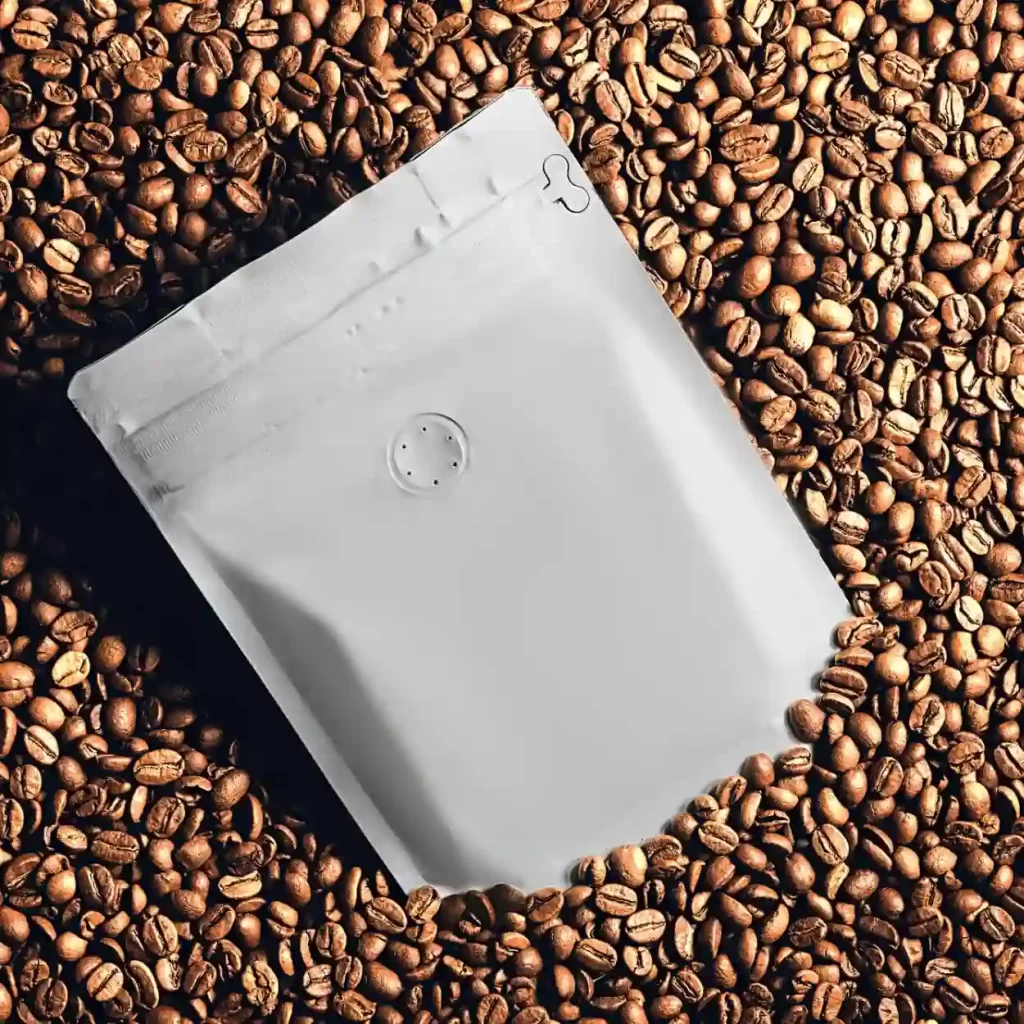
Timing your coffee purchase is another important aspect. This coffee harvest season typically falls between August and March, peaking around November. Purchasing during or shortly after this time can assure that you are getting the freshest beans. During this season, coffee farms are bustling with activity as cherries are picked at their ripest and processed into beans. If you are looking for the absolute freshest Puerto Rican coffee, aim to buy during this window when the new crop hits the shelves. Keep in mind that reputable providers of this delicious coffee will usually indicate the harvest date on their packaging, ensuring consumers are well-informed about the coffee’s freshness.
Takeaway:
- The primary harvest season in Puerto Rico is from August to March, peaking around November
- Aim to buy during or shortly after the harvest season for the freshest beans
- Look for the harvest date on the packaging
Knowing how to buy authentic Puerto Rican coffee is about being an informed consumer. By paying close attention to labels and seals, and timing your purchase to align with the harvest season, you can enjoy the full, rich experience that this delightful beverage has to offer.
Comparing Puerto Rican Coffee to Other Latin American Coffees
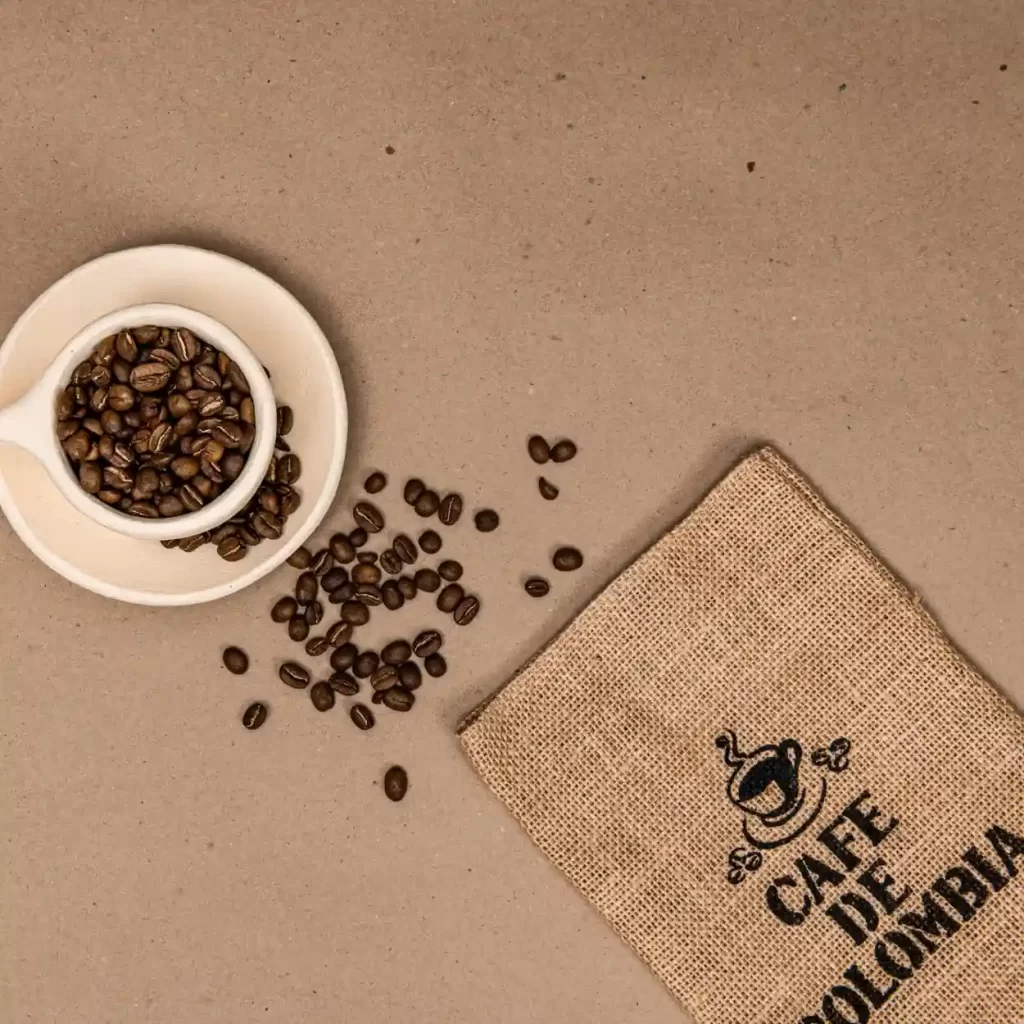
The vibrant world of Latin American coffee is as diverse as the region itself, painting a vivid spectrum of flavors, aromas, and traditions. From the high-altitude farms of Colombia to the historic coffee regions of Brazil, each nation holds its own unique spot in this rich landscape. Right at the heart of this narrative is coffee from Puerto Rico, an intricate blend that reflects the island’s lush environment and meticulous cultivation. Let’s dive into a nuanced comparison between Puerto Rican coffee and its other Latin American counterparts, highlighting what sets each apart while celebrating the region’s collective mastery over this beloved brew.
Puerto Rican Coffee: The Harmony of Tradition and Quality
Puerto Rican coffee, nurtured in the island’s fertile soils, carries with it a deep sense of history and pride. Visiting a Puerto Rico coffee plantation is akin to stepping into a living museum, where tradition fuels innovation. The coffee here is known for its smooth, rich, and well-balanced flavor profile, often complemented by chocolaty notes and a hint of fruitiness. The island’s unique climate, characterized by a balance of rain and sunshine, allows for beans to develop slowly and fully, resulting in a sweet, full-bodied cup that is low in acidity.
- Smooth and Rich: This coffee is celebrated for its velvety texture and full-bodied flavor.
- Traditional Methods: Many Puerto Rican farmers prioritize quality over quantity, adhering to time-honored farming and processing methods.
- Unique Terroir: The specific conditions of a Puerto Rico coffee plantation, including its soil, climate, and elevation, contribute significantly to the coffee’s distinctive taste.
Colombian Coffee: The Well-Rounded Classic
Colombian coffee is often regarded as one of the most high-quality and well-balanced coffees in the world. With a mild, clean, and pronounced flavor, it’s a classic that is beloved globally. Colombia’s various growing regions, each with its unique microclimate, yield diverse flavor profiles, ranging from nutty and chocolatey to fruity and floral.
- Diverse Regions: Colombia’s coffee-growing regions are numerous and varied, each contributing a unique flavor profile to the national output.
- Global Recognition: Colombian coffee is internationally acclaimed, known for its consistent and exceptional quality.
Brazilian Coffee: The Diverse Powerhouse
Brazil is the world’s largest coffee producer, and its coffee is as diverse as the country itself. The range includes everything from bold and robust beans with chocolatey and nutty notes to light and bright beans with fruity and floral flavors. Brazilian coffee is versatile and is a frequent feature in espresso blends due to its low acidity and pronounced body.
- Huge Volume: Brazil produces a significant portion of the world’s coffee, offering a broad spectrum of flavors and qualities.
- Distinctive Notes: Chocolate, nuts, and spice are commonly found in Brazilian coffee profiles, though the country’s vast growing regions produce a wide variety.
While each Latin American coffee-producing country boasts its own signature flavor profiles and cultivation methods, there’s a shared characteristic that unites them: a deep-rooted passion for coffee. From a Puerto Rico coffee plantation to the sprawling coffee farms of Brazil, the love and labor invested into each bean are palpable. Whether you’re savoring a cup of coffee from Puerto Rico or enjoying a brew from Colombia or Brazil, you’re not just tasting a beverage; you’re partaking in a rich, interconnected tradition that spans across borders and generations.
Conclusion
In conclusion, the rich tapestry of this coffee culture is as diverse and vibrant as the island itself. From the meticulous cultivation of beans on high-altitude plantations to the time-honored traditions of local farmers, each step in the process is a testament to Puerto Rico’s commitment to excellence in coffee production. Throughout this guide, we have journeyed together through the aromatic world of the island’s most esteemed offerings, highlighting the signature brews that truly stand out in a competitive market. We’ve unveiled the stories behind the best Puerto Rican coffee brands, showcasing not just the quality of their products, but the passion and heritage that fuel their endeavors.
As you savor your next cup of this lovely beverage, may you taste not only the rich, complex flavors that characterize these exceptional beans, but also the love, history, and tradition that is brewed into every single batch. Here’s to finding your perfect cup in the diverse and distinguished landscape of the best Puerto Rican coffee brands. Cheers to your next flavorful and enlightening expedition!
FAQ
How has the history of Puerto Rico shaped its coffee industry?
The history of Puerto Rico, from Spanish colonial rule to U.S. annexation, has significantly influenced its coffee industry, affecting production levels, farming methods, and global export relationships.
What are some notable Puerto Rican coffee brands?
Some notable Puerto Rican coffee brands include Café Lareño, Café de Oro, and Café Di Laris.
What is the best way to brew Puerto Rican coffee at home?
For best results, use freshly ground Puerto Rican coffee beans, follow a precise coffee-to-water ratio (often 1:16), and experiment with your preferred brewing method, such as a French press, drip brewer, or espresso machine.
Where can I buy authentic Puerto Rican coffee?
Authentic Puerto Rican coffee can be purchased from specialty grocery stores, online retailers, or directly from coffee plantations and local roasters in Puerto Rico.




















